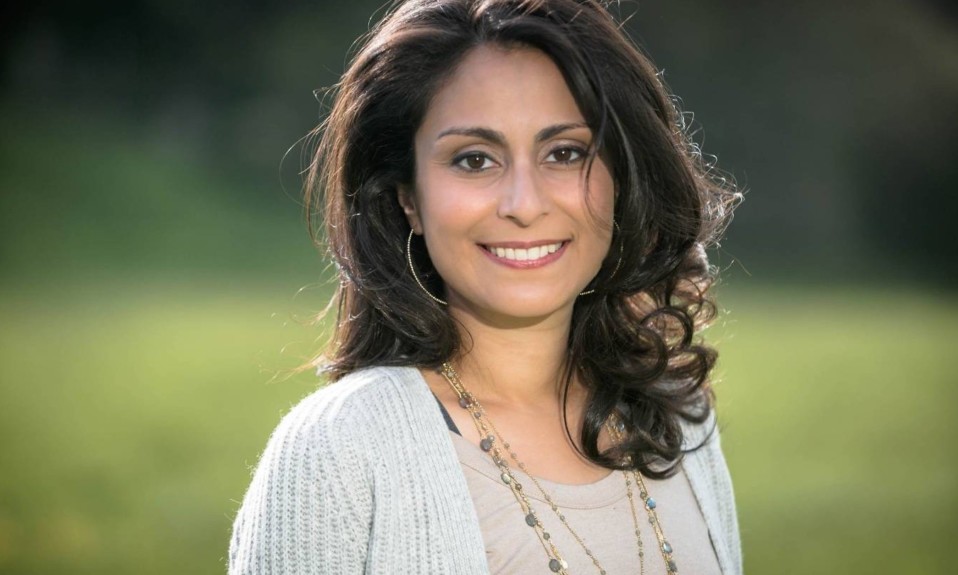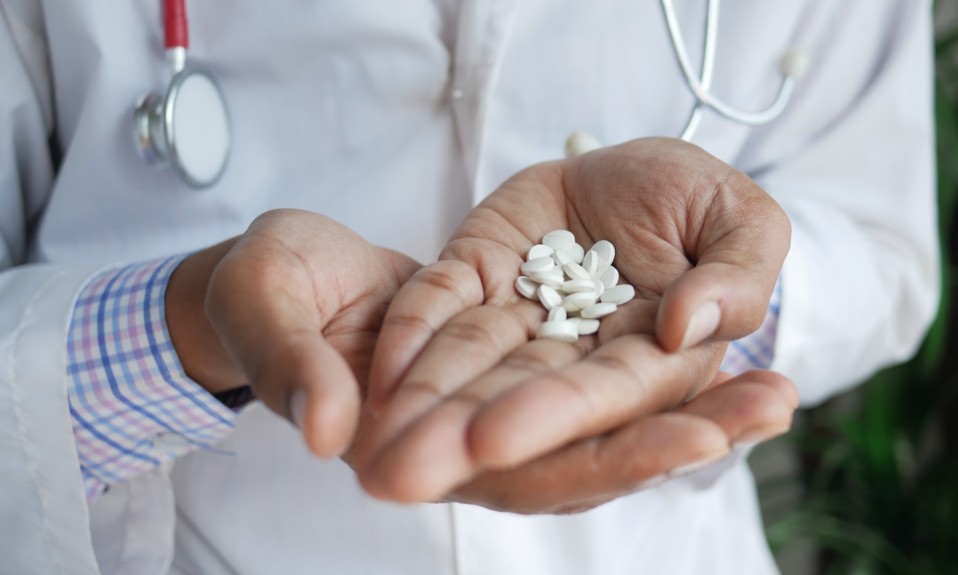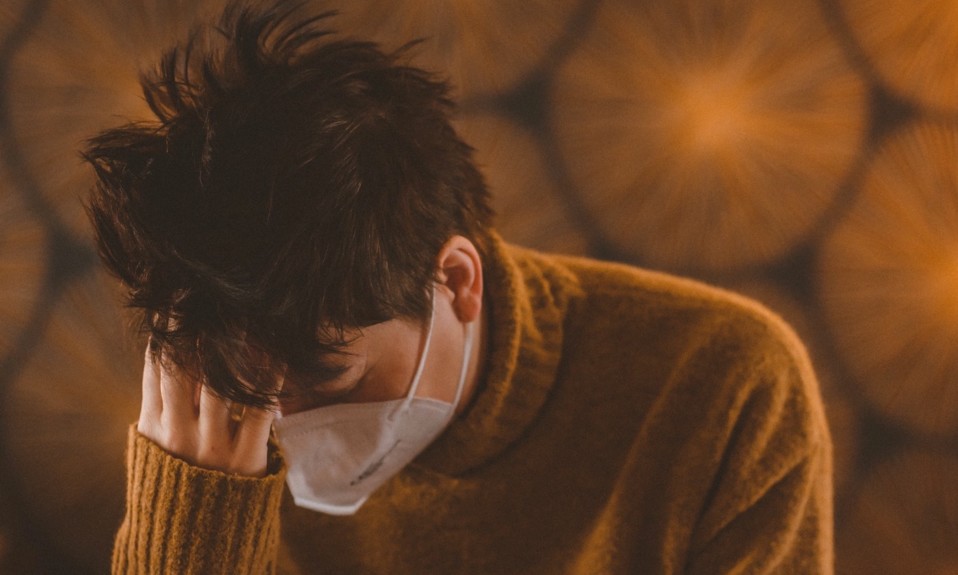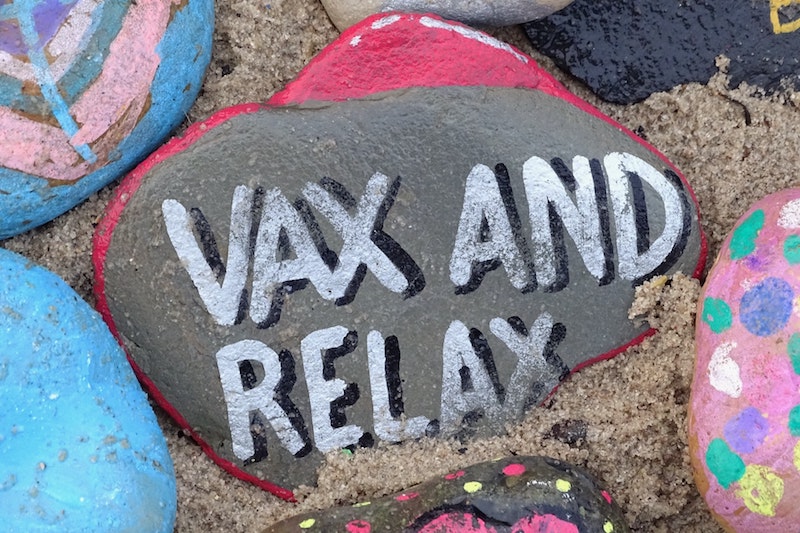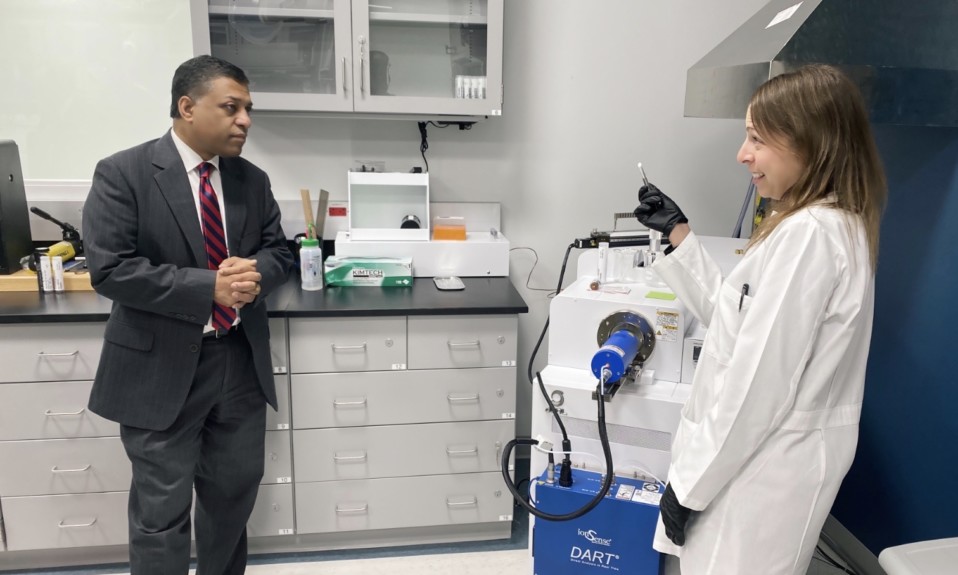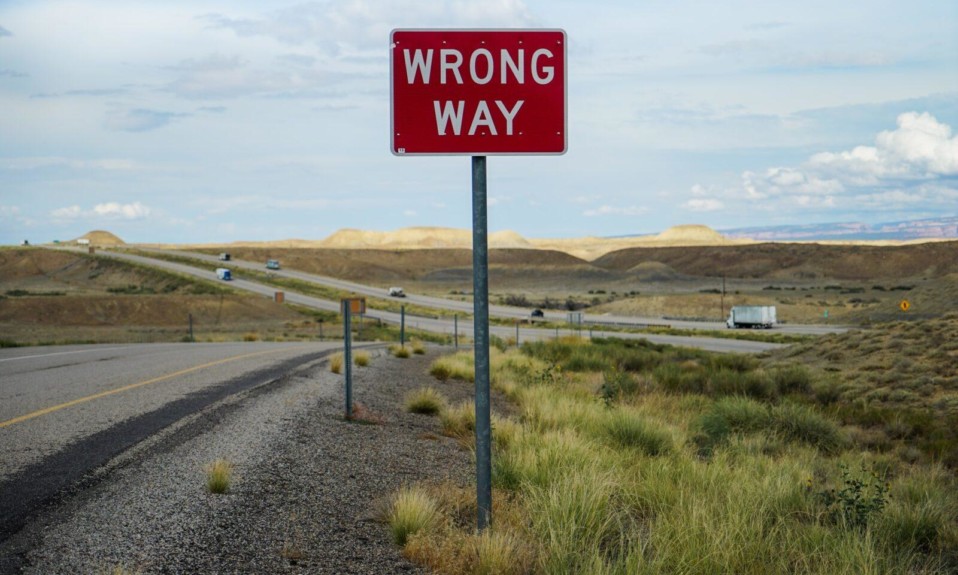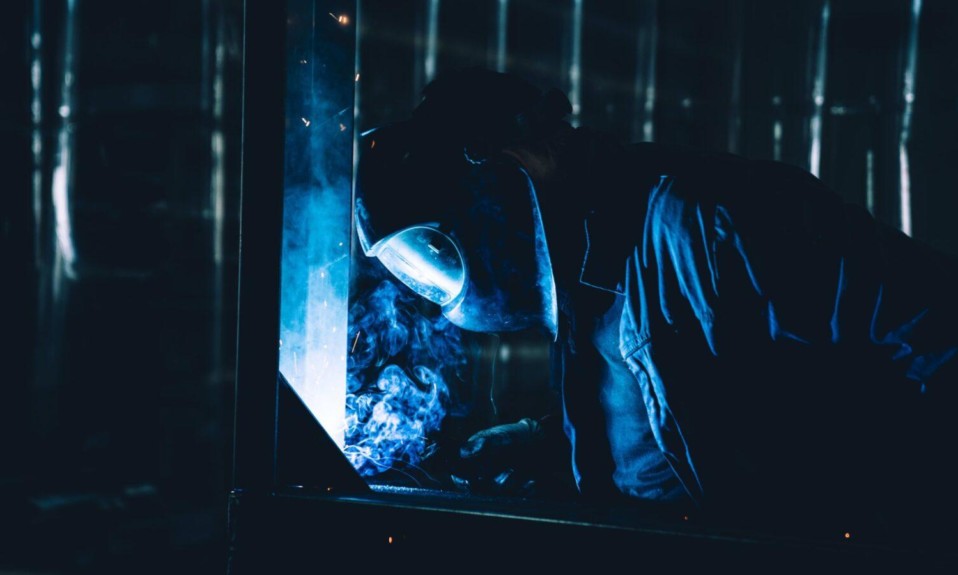The esteemed infectious disease specialist spoke with TreatmentMagazine.com about the pandemic’s collateral damage
By Mark Mravic
“I wear a lot of hats,” Celine Gounder, MD, says, sitting a couch on the terrace of her apartment in Manhattan’s bustling Flatiron district, her miniature poodle Zizou on her lap. A clinical assistant professor of medicine and infectious diseases at New York University’s Grossman School of Medicine, Gounder has been a familiar face and voice during the COVID-19 pandemic, appearing regularly as a health expert on network and cable news programs, writing in The New York Times, The Washington Post, The Atlantic and numerous other outlets, and hosting an acclaimed podcast, Epidemic, that has covered the full range of issues related to COVID. She’s also had boots on the ground during the crisis, treating patients at Manhattan’s Bellevue Hospital, an epicenter of the pandemic in the brutal first wave in the spring of 2020.
Gounder has a breadth of experience in infectious diseases and their societal impact. From 1998 to 2012 she studied tuberculosis and HIV in a number of African nations and in South America, and during the Ebola outbreak in 2015 she spent two months volunteering in Guinea. She served on the Biden-Harris transition team’s COVID-19 Advisory Board and has been advising New York City public health officials through the pandemic. She sees all those hats as part of her role as a doctor and public health expert. “A lot of it is keeping up with the science,” she says, “so I can help people put things in context and distill what’s happening.”
Gounder spoke to TreatmentMagazine.com to do just that, with a special emphasis on the mental health and substance use aspects of COVID-19.
Q: Where are we right now with the pandemic?
A: Cases are on the decline in most of the country, so our Delta surge has peaked. This is kind of what we’ve seen with every surge or wave. Just as you have an exponential rise, you have an exponential fall. What happens, though, is that between waves, people have this false sense of security, of ‘Oh, it’s all over,’ which is what happened in June and July. Then Delta hit, so it was obviously not the case. I think we will have another wave around Thanksgiving, Christmas and New Year’s. With the virus, you burn through social networks, and then the virus dissipates. But when you create new social networks, you set up new chains of transmission. That’s exactly what happens when people travel and see family and friends—you’re creating new chains of transmission.
In hospitals, [the pandemic] has definitely created a big crunch and more difficulty in getting people into in-patient rehab programs. It’s created bottlenecks there, and then bottlenecks on the other end. You admit people to these programs, but then they need to have someplace to go, and where do you send them that’s safe once they finish?”
—Celine Gounder
On top of that we still don’t entirely understand the seasonality. We think that when people go indoors, whether it’s because of colder weather in the North or hot weather in the South, that results in more transmission. But it doesn’t entirely explain some of the patterns we’re seeing. Like right now we’re seeing increased transmission in places like Minnesota and North Dakota, but the weather hasn’t actually gotten much colder there yet, so it doesn’t fully explain why that is. So it’s not a perfect science.
Q: Let’s talk about the mental health aspects of this pandemic. You’ve been on the ground and seen it firsthand at Bellevue and other places. What’s been your experience?
A: There’s been a lot of attention paid to kids in isolation, adults in loneliness and isolation, and those are more common across the population. But I think you have more specific issues, and frankly more deadly issues, with people who struggle with substance use disorders. They really need community—that’s such a big part of their recovery—and so not being able to go to group meetings and those kinds of things is very dangerous for that particular group. They’ve also had a more difficult time accessing medication-assisted treatment with methadone or Suboxone because of the pandemic.
There’s been an attempt to shift to telemedicine for some of that, and depending on the population, it’s more successful for some than for others. You can imagine higher-functioning, wealthier people who have phones and broadband access have an easier time with that. But not everybody does. That was one thing that was really striking during the pandemic at Bellevue—a lot of people didn’t have cellphones. I think everybody assumes everybody has a cellphone. We had filing cabinets, many cabinets, full of cellphones, chargers, etc., in our workrooms for the pandemic, because that was the only way some of these people could establish contact with family members.
Q: So you would actually give them the phones?
A: Yes, we would give them the phone and chargers. Because we couldn’t allow people in, so we would give one to them and one for their families so they could stay in contact.
Another key issue is social distancing. One thing we really advise [for substance users] is that, especially with the rise of fentanyl, you use with a buddy. So one of you uses, and the other one is there to watch and make sure everything is OK, to call 911 if somebody overdoses, to have Narcan to administer to the other person if they overdose. And if you’re using alone, well, you don’t have that buddy to help you if you do overdose. So that’s also made things more dangerous.
In hospitals, [the pandemic] has definitely created a big crunch and more difficulty in getting people into in-patient rehab programs. It’s created bottlenecks there, and then bottlenecks on the other end. You admit people to these programs, but then they need to have someplace to go, and where do you send them that’s safe once they finish? That’s been another challenge. We’ve definitely seen an increase in overdoses, and deaths from overdoses, during the pandemic. That’s been well-documented.
Another piece of the anxiety-depression story that is not limited to people with substance use issues is people who have socio-economic stress from the pandemic. People who have lost their job, lost their housing, can’t put food on the table—those are the people who suffer the most in terms of mental health. And I think that’s really underappreciated.
I think New York City is going to be at the vanguard of how to address substance use disorders in the coming couple years. I think they understand this is an issue that has flared up over the course of the pandemic.”
—Celine Gounder
Q: That was one of my questions, the ancillary elements—people who are not necessarily dealing with the illness but with the uncertainty around it. What about even social media and the divisiveness we see around the country?
A: I think especially for people who work in this stuff, like public health and healthcare, people forget we’re actually human beings who are suffering the same stuff everybody else is. And then on top of that, you’re being attacked; and on top of that, you’re bearing witness to what you’re seeing with patients; and on top of that, you’re dealing with people saying you are wrong and you’re evil and you’re lying. Public healthcare officials in particular. There’s been a massive attrition of public health workers. And no one wants to work in those jobs, because you’re going to be attacked. Literally, we’ve had to have local law enforcement provide security to these people and their families. People’s kids are being harassed. It is a very challenging space.
Q: When you were on the Biden-Harris transition team, was there some emphasis put on the mental health and substance use aspect of the pandemic?
A: Vivek Murtha, the surgeon general, his big area pre-pandemic was loneliness. In fact, he published a book about isolation and loneliness prior to the pandemic. So it’s definitely an issue he is concerned about. Kamala Harris was very concerned about the impact of the pandemic on kids, including their mental health. Those were the two people who were most concerned from a mental health angle. Honestly, I think coming in, the focus was on vaccinate, vaccinate, vaccinate, and figuring out supply chain issues, and making sure we have enough vaccine. And then once that was starting to look okay, it was figuring out distribution and vaccination sites. I would say 99% of the emphasis was on that.

Q: And what about now? Are there movements afoot, programs getting started, that address the mental health and substance use aspect of the pandemic?
A: I can’t speak to the details yet because they’re not public, but I think New York City is going to be at the vanguard of how to address substance use disorders in the coming couple years. I think they understand this is an issue that has flared up over the course of the pandemic, and there was a lot of work still to be done pre-pandemic that they will be prioritizing moving forward.
Q: Along those lines, in a strange way, is there a positive to come out of this in terms of awareness and action? Has the pandemic put a spotlight on mental health and substance use?
A: I think for the suburban soccer mom version of mental health issues, yes. Not to put down soccer moms—not to say it’s not real—but it’s on a different end of the spectrum. It’s not leading people to die. On the other end of the spectrum of substance use disorder, I am concerned. I think one major thing—and this is unrelated but is happening at the same time—is that with the Purdue Pharma settlement, there is going to be this influx of money, and the question is, how will that money be spent? With the big tobacco master settlement, a lot of that money went into general public coffers, not into smoking cessation programs. All that does is really alleviate tax burden—that doesn’t help you with the problem you’re supposed to be solving. So if that money from the Purdue settlement goes into substance use disorder treatment and prevention, yes, it could have a huge impact.
Q: From what I’ve read and what we’ve written, a lot of states are creating agencies to make sure that money gets put toward direct applications.
A: Yes, and I think some states will probably do better at that than others. I think the other issue is, will they entertain certain options? Some states are more open to medication-assisted treatment than others. Some states are more open to syringe exchange programs than others. Another thing that is coming is, depending on who you’re talking to they call it supervised injection sites, supervised consumption sites. The new terminology is opioid overdose or drug overdose prevention sites, where you bring in your drugs but you have medical staff there that will watch you—basically the buddy system but medicalized. Then if you overdose, somebody is there to give you Narcan and to attend to you. A number of cities have been pushing for that—San Francisco, Seattle, Philadelphia, New York. Under the Trump administration it was basically a no-go. Now it’s starting to perhaps see some momentum again. So the question is, will different localities go for that kind of thing, or will they go strictly for the NA, abstinence-only kind of approach?
I think the pandemic has been a massively traumatizing event to so many people for so many reasons. Some of that trauma is related to the health effects and death, some of that is related to social and economic impacts of the pandemic. Where we’ve gotten more polarized is in thinking our traumas are worse than anyone else’s and minimizing the traumas of others.”
—Celine Gounder
Q: Harm reduction works. Evidence-based treatment works. It’s just getting people to wrap their heads around …
A: … that it’s not just enabling, yeah. That’s the issue. We have a very strong shame-and-blame culture in this country, so you need to overcome that.
Q: One aspect of pandemic-related mental health that we rarely hear about is grief. We’ve had more than 700,000 deaths, meaning millions of people have lost parents, brothers and sisters, kids, friends, neighbors. More than 140,000 young children have lost a caregiver to COVID, according to the CDC. All of this is taking place in a climate of divisiveness and denial, and the actual personal pain seems to be overshadowed by that. Is America facing some kind of looming crisis of grief, which could evolve into significant long-term mental health problems?
A: I think the pandemic has been a massively traumatizing event to so many people for so many reasons. Some of that trauma is related to the health effects and death, some of that is related to social and economic impacts of the pandemic. Where we’ve gotten more polarized is in thinking our traumas are worse than anyone else’s and minimizing the traumas of others. What’s unfortunate is the very cadre of people who care for traumatized people—healthcare workers, public health workers, social workers and other caregivers—have been incredibly traumatized by the pandemic themselves.
I think we do have a crisis of grief looming. Often the full impacts of trauma aren’t felt until people emerge and have some distance from a trauma. Only then do they have a chance to reflect on what’s happened and to feel the full force of that trauma.


